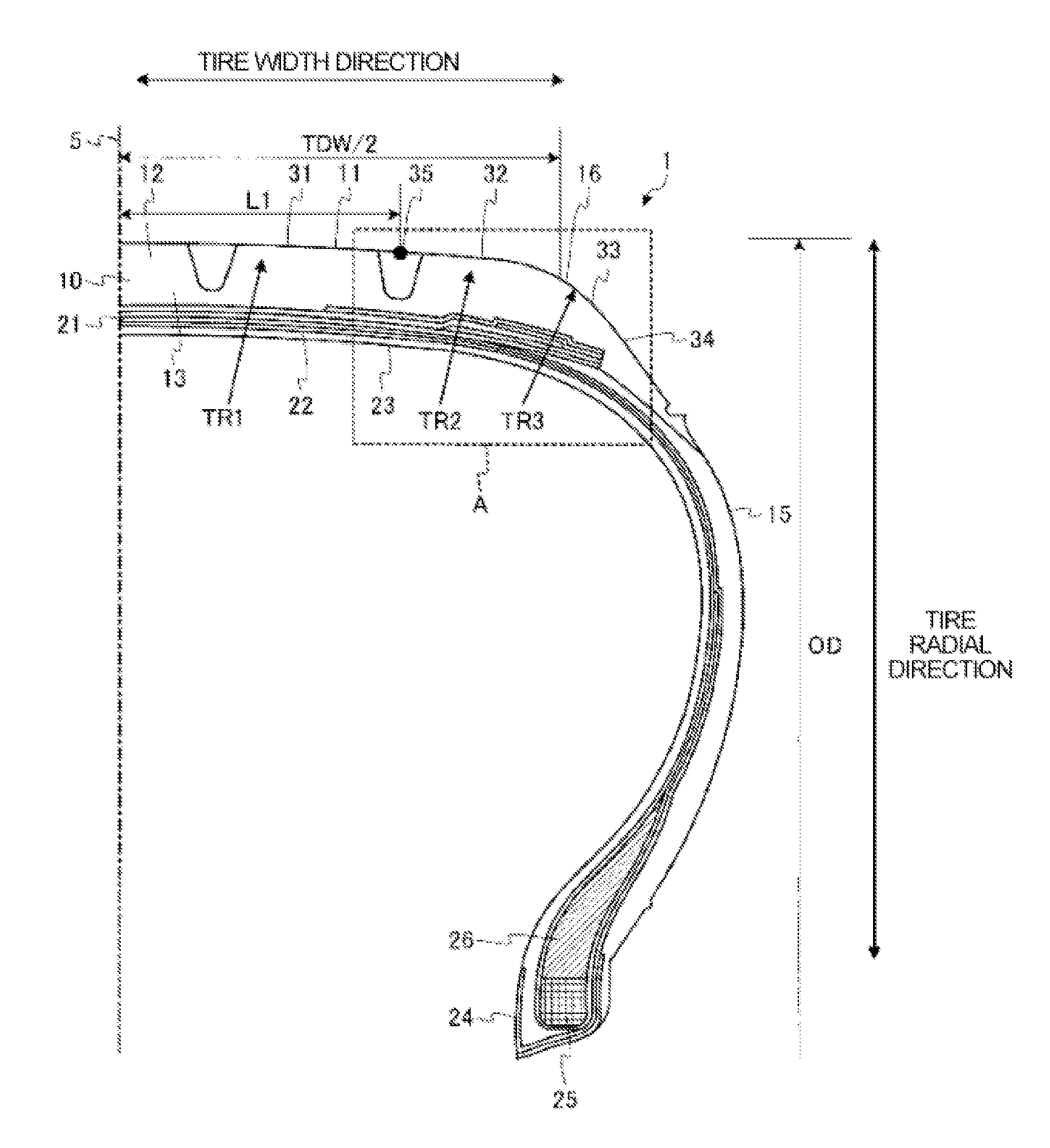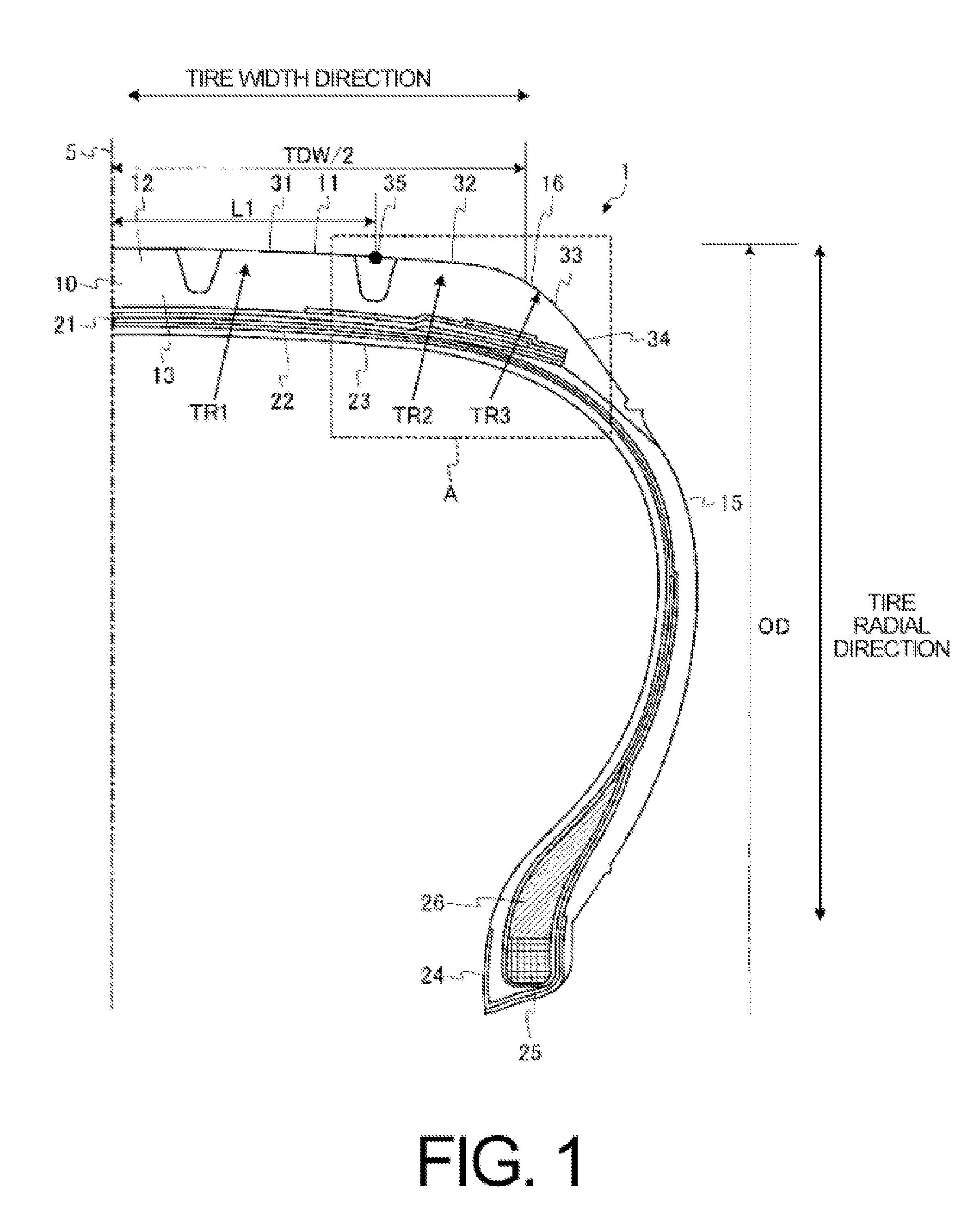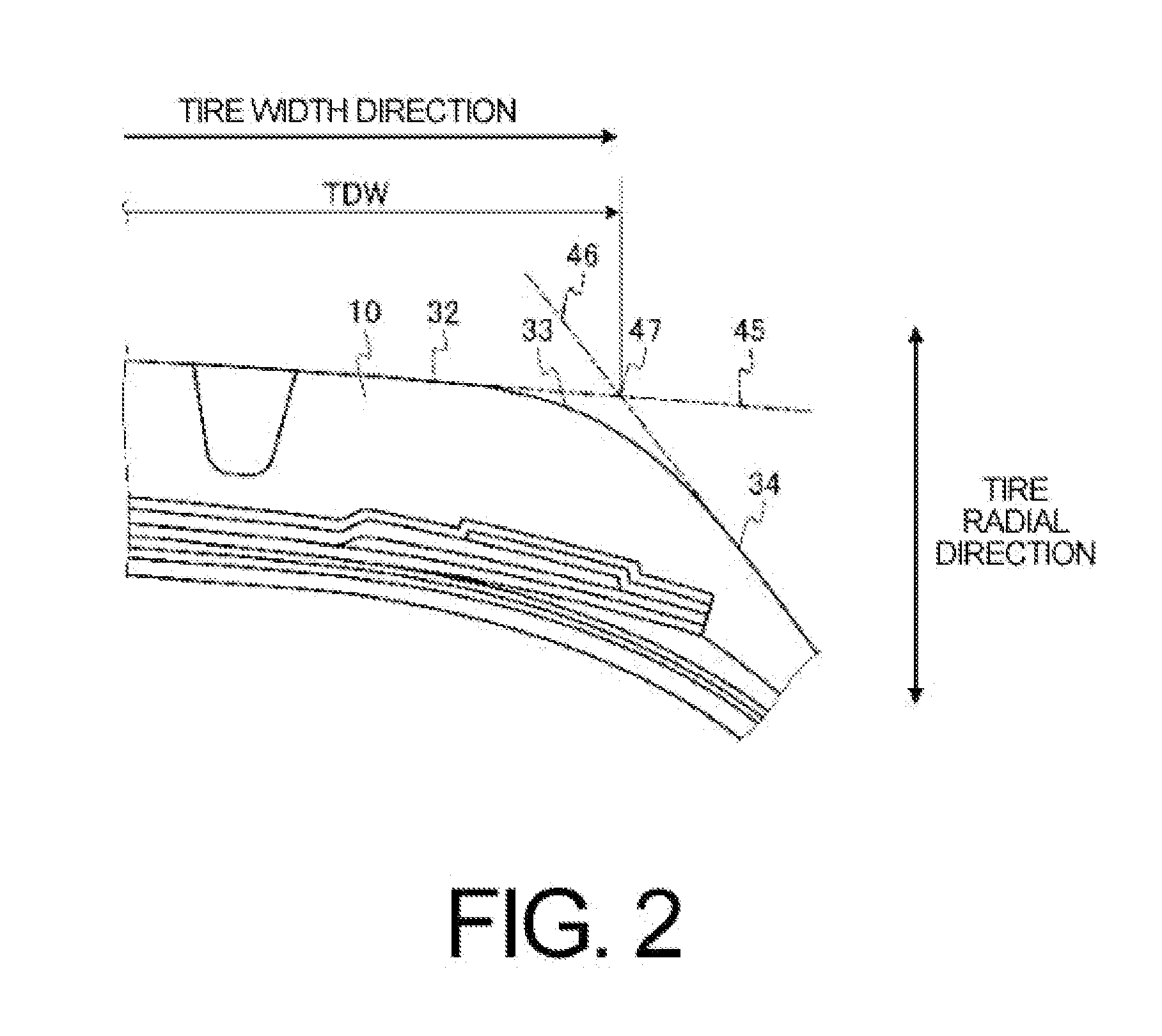[0011]In the present technology, by setting K1, as derived from the contour range L1 and the developed tread width TDW in formula (1), to satisfy 0.6≦K1≦0.9, and by setting K2, as derived from the curvature radius TR1 of the center portion arc and the external tire diameter OD in formula (2), to satisfy 2.0<K2, the profile of the tread surface can be provided with a flattened shape. Thereby, for example, the contact area of the rear wheels of an FF-type vehicle when under light-load conditions can be increased. Therefore, cornering power under light-load conditions can be enhanced. Therefore, when braking or driving, lateral force variation, which acts on a vehicle especially when under light-load conditions, can be enhanced and, therefore, vehicle deviation can be suppressed.
[0013]In this aspect, the hardness of the cap tread is made to vary in the tire width direction. Specifically, the hardness of the inner side cap tread that is a portion that is close to the tire equatorial plane and that contacts the ground when under light-load conditions is configured so as to be greater than the hardness of the outer side cap tread that is a portion that is close to the tire shoulder end and that contacts the ground when under heavy-load conditions. Thus, by configuring the stiffness of the inner side cap tread that contacts the ground when under light-load conditions so as to be greater than the outer side cap tread, cornering power when under light-load conditions can be more reliably increased, and vehicle deviation when under light-load conditions can be greatly suppressed.
[0014]Specifically, the JIS A hardness of the inner side cap tread at room temperature can be configured so as to be 63 or greater but 75 or less. By configuring the hardness so as to be 63 or greater but 75 or less, the stiffness of the inner side cap tread can be sufficiently ensured, and vehicle deviation when under light-load conditions can be prominently suppressed. On the other hand, if the JIS A hardness exceeds 75, durability of the inner side cap tread will decrease. Additionally, the JIS A hardness of the outer side cap tread at room temperature can be configured so as to be 3 or greater but 15 or less lower than the JIS A hardness of the inner side cap tread at room temperature. By configuring a hardness difference of the hardnesses to be 3 or greater but 15 or less, the contact area of the outer side cap tread can be sufficiently ensured when under light-load conditions. On the other hand, the hardness difference will be great if it exceeds 15, and will be a cause of uneven wear.
[0017]In this aspect, the hardness of the under tread is made to vary in the tire width direction. Specifically, the hardness of the inner side under tread that is located inward in roughly the tire radial direction of inner side cap tread that is a portion that is close to the tire equatorial plane and that contacts the ground when under light-load conditions is configured so as to be greater than the hardness of the outer side under tread that is located inward in roughly the tire radial direction of the outer side cap tread that is a portion that is close to the tire shoulder end and that contacts the ground when under heavy-load conditions. Thus, by configuring the stiffness of a portion on the inner side in the tire width direction of the tread portion that contacts the ground when under light-load conditions so as to be greater than a portion on the outer side in the tire width direction of the tread portion, cornering power when under light-load conditions can be more reliably increased, and vehicle deviation when under light-load conditions can be greatly suppressed.
[0018]Specifically, the JIS A hardness of the inner side under tread at room temperature can be configured so as to be 55 or greater but 65 or less. By configuring the hardness so as to be 55 or greater but 65 or less, the stiffness of the portion on the inner side in the tire width direction of the tread portion can be sufficiently ensured, and vehicle deviation when under light-load conditions can be prominently suppressed. On the other hand, if the hardness exceeds 65, durability under the tread grooves will decrease. Additionally, the JIS A hardness of the outer side under tread at room temperature can be configured so as to be 3 or greater but 15 or less lower than the JIS A hardness of the inner side under tread at room temperature. By configuring the hardness difference so as to be 3 or greater but 15 or less the stiffness of the portion on the inner side in the tire width direction of the tread portion when under light-load conditions can be sufficiently ensured, and vehicle deviation when under light-load conditions can be greatly suppressed. On the other hand, the hardness difference will be great if it exceeds 15, and thus will be a cause of uneven wear.
[0020]With a pneumatic tire according to the present technology, cornering power can be sufficiently generated when under light-load conditions and vehicle deviation can be suppressed.
 Login to View More
Login to View More  Login to View More
Login to View More 


